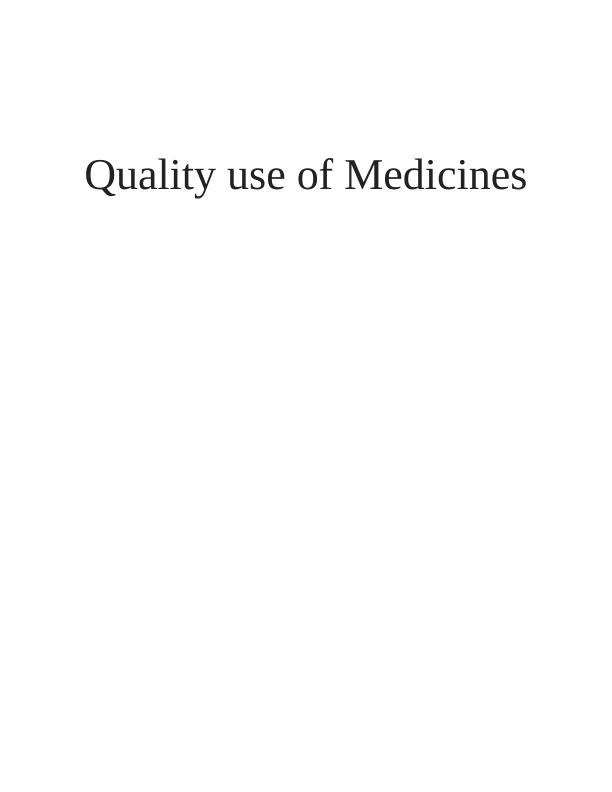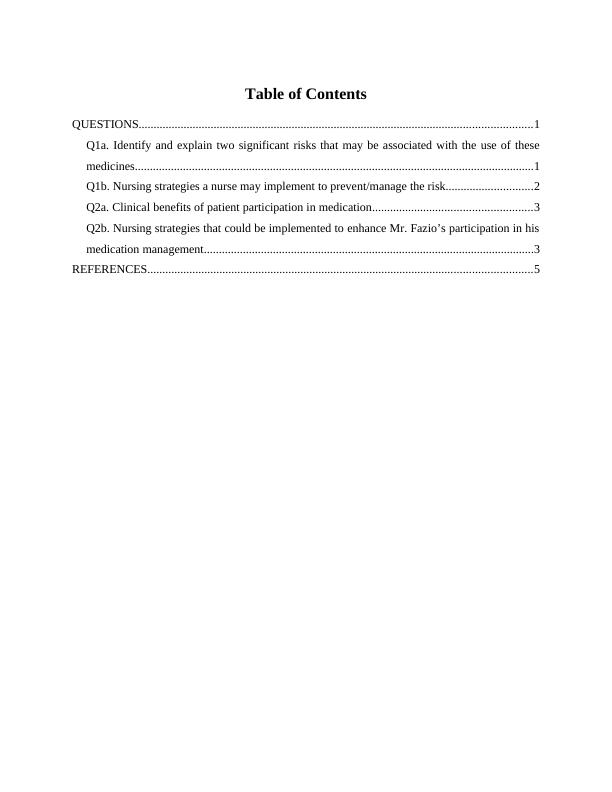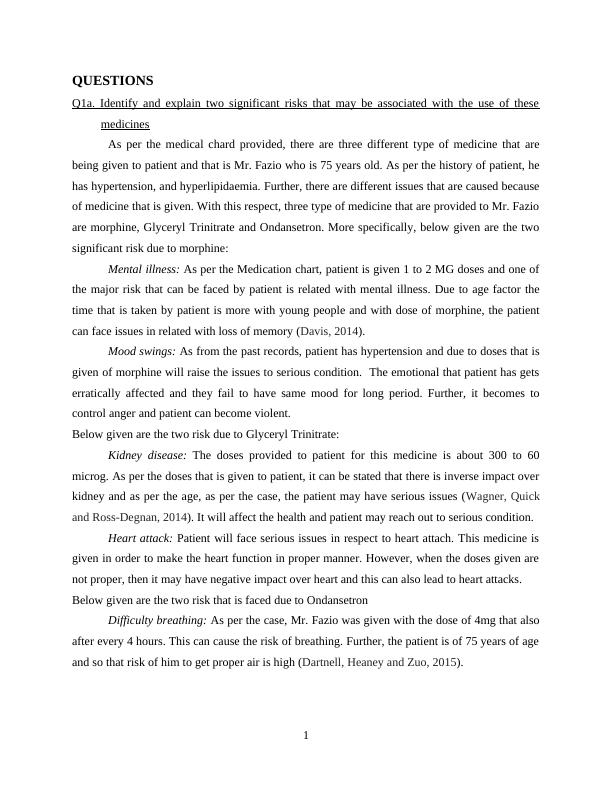Ask a question from expert
Quality use of Medicines
7 Pages2171 Words76 Views
Added on 2020-02-12
Quality use of Medicines
Added on 2020-02-12
BookmarkShareRelated Documents
End of preview
Want to access all the pages? Upload your documents or become a member.
Nursing management of a patient case study
|9
|2775
|162
Emergency Department Nursing Management
|13
|2772
|141
Acute B Clinical Reasoning Case Study - Desklib
|7
|1795
|135
Effective Risk Management Strategies for Medication-related Risks in Patients: A Case Study Analysis
|9
|2320
|273
Assignment on Nursing Process
|7
|2024
|43
Chronic Systolic Heart Failure: Causes, Symptoms, and Treatment
|8
|2001
|221


